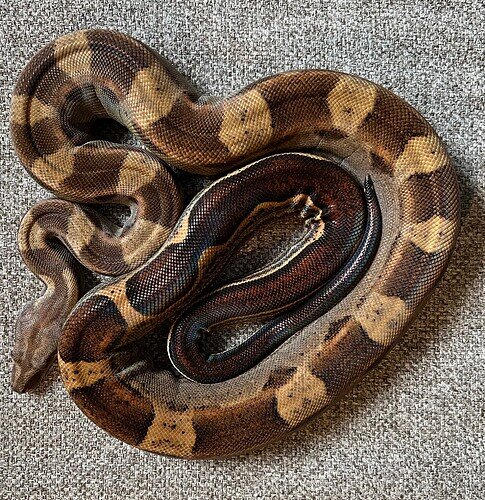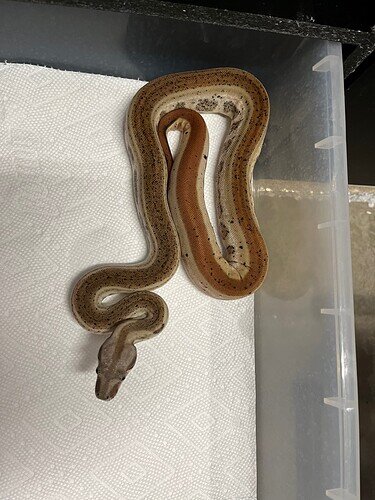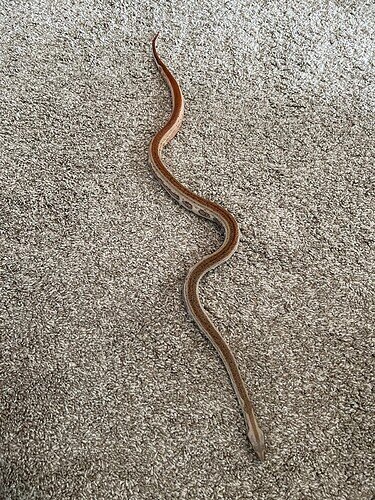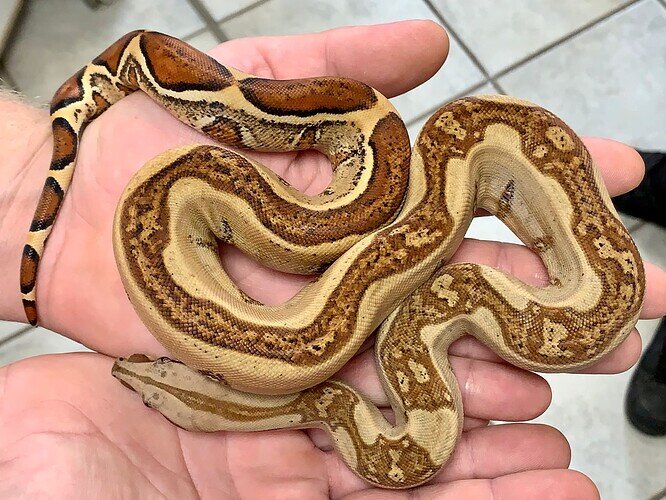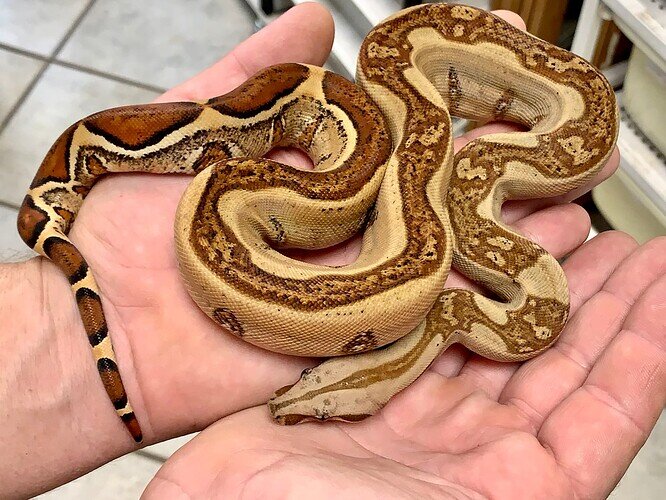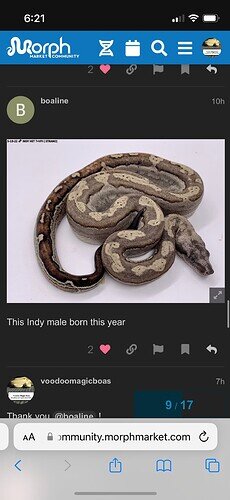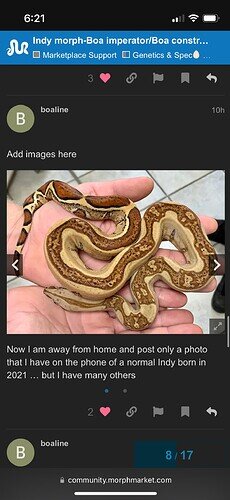Gene Request Form
Species: Boa imperator/Boa constrictor imperator
**Name of Gene: Indy
**First produced by whom: Enrico Marconato
**Year First Produced: 2012
**Genetics Type (Incdom/Codom/Recessive/Polygenic/etc):
From the website boaline.it:
“INDY is the name I have decided to give this new gene, it is a DOMINANT gene with no super visible shape.”
**In complex with other genes?:
From the website boaline.it:
If in combo with the motley there is a solid and marked striper and lateral shades always of the marking colors of the gene.
*Other names/aliases for it?:NA
**Description:
From the website boaline.it:
the characteristics of this morph are a very aberrant and often striped design, with an interwoven color in pastel tones and well defined.
Appearance; What it does/looks like?
- Head:
- Body:
- Belly:
- Tail:
Proven Lines:
Related Genes:
Proven: To what degree it is proven out to not just be polygenic?-see below
Unique: Why do you believe this is a new morph and not an existing one?-see below
Problems: Any problems? NO
History: The history behind its discovery?-see below
Disagreement or Controversy:
References here on the community:
see below:
from the website boaline.it
INDY BOA
Before 2000 I took an adult female catch buoy in a shop which was much more particular than the standard of the buoys that were seen in those years.
Aesthetically not beautiful, when at the time they preferred clean pastel colored specimens with a regular pattern, she was very dark and a very different and compact pattern, with one eye of one color and the other of another.
I mated for the first time this female with a hypo male, her litter was small but very particular in color and pattern. The most particular born was a hypo female that I kept to myself.
At the time I had started breeding boas a few years ago and I didn’t know much about the genetics and the existing and defined morphs were very few.
The once adult hypo daughter mated with a motley male, one of the first to arrive in Europe.
From the litter I had kept the hypo motley male with more striped and particularly bright colors and purple tones. This male evidently carried a new gene within him
Mated for the first time in 2011-12 with a female Pastel boaline the result was a litter of 11 pups including a fully striped motley female. At first I just thought it was a lucky case of a particular animal, but many of the little ones of this litter pruned stripes and particular designs.
In the same year he was mated with a salmon Jungle female and in the litter he gave very particular animals including a totally striped female hypo motley jungle.
The following year, mating the hypo motley male with a very normal hypo female, in the litter many specimens were aberrant and a totally striped hypo motley male like the 2012 motley and the hypo motley jungle of 2012. Here I began to think that it was no longer just a case.
Subsequently in 2015 as the first mating between female INDY MOTLEY 2012 x male INDY HYPO MOTLEY 2013 I had the first litter which demonstrated that the trait is transmissible and it is a new gene, producing many offspring equal to the parents (INDY MOTLEY), others without the motley gene that define the morph standard and finally super motley.
INDY is the name I have decided to give this new gene, it is a DOMINANT gene with no super visible shape.
INDY boa: the characteristics of this morph are a very aberrant and often striped design, with an interwoven color in pastel tones and well defined. If in combo with the motley there is a solid and marked striper and lateral shades always of the marking colors of the gene.
To have further confirmation of the genetics in 2015-16 I repeated the mating between female INDY MOTLEY 2012 x male INDY HYPO MOTLEY 2013 I had the second litter which showed again that the new INDY gene (DOMINANT GENE) is fixed producing the same results of the previous year.
In the same season I mated the female INDY HYPO MOTLEY JUNGLE 2012 x male SUNGLOW PK, I had a further confirmation demonstrating that the new INDY gene is fixed and is co-dominant producing offspring of the INDY, INDY JUNGLE, INDY JUNGLE HYPO gene, JUNGLE HYPO, MOTLEY JUNGLE, MOTLEY etc. marking the litter for 60%, the dominant form.
Many of the pups in this litter carry another strange feature of having a pink tongue, like albinos, or two-tone pink and black.
My thought was what a form of Jungle could be, but this is not what we see, in the next images, how the Jungle has changed the regularity of the striped and of the design.
-
At least one link to community discussion (ie forums) to demonstrate community acceptance
-
Links to the wider web.
boaline.it
Please attach at least 3 photos you have rights to which you are granting to be used on MorphMarket.
We did not produce this morph. Please help me if there’s anything I need to change or add.
